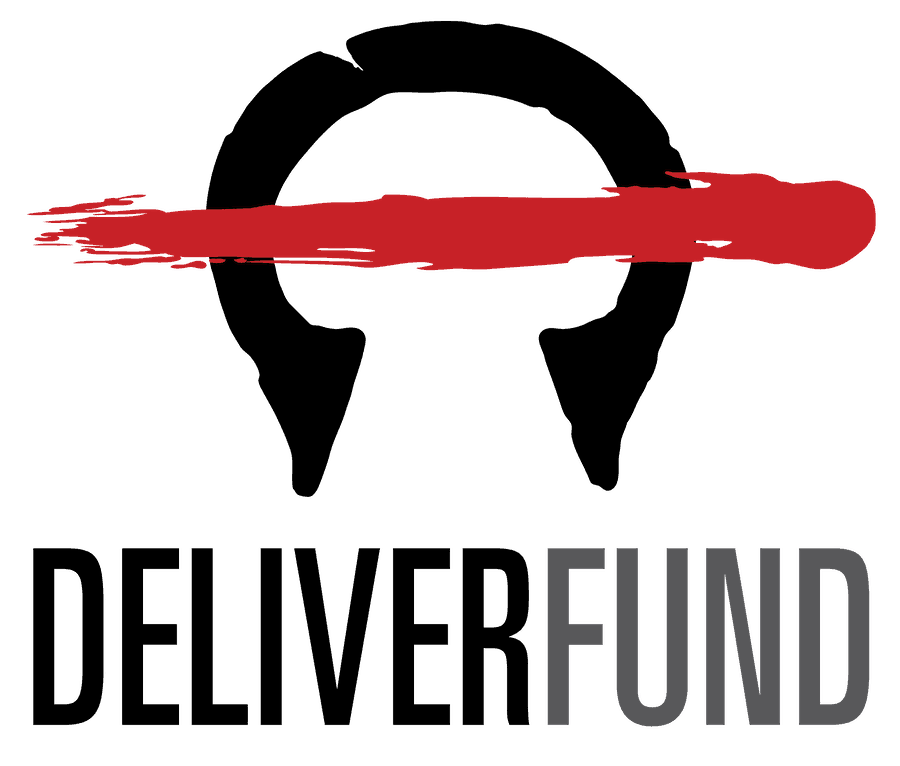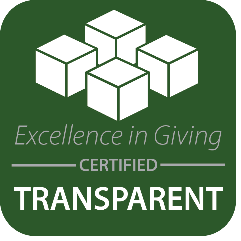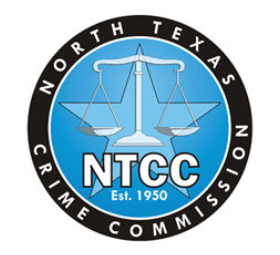The three elements of human trafficking awareness are 1) knowing the indicators of human trafficking, 2) knowing the elements of human trafficking, and 3) knowing the laws about human trafficking.
Indicators of human trafficking are the signs that you can look out for, the red flags that indicate that a person might be in distress and; that they might be a victim of human trafficking. There are many indicators of human trafficking, and while a person might meet one of the indicators and be perfectly fine, if they meet several of the indicators, then the odds are good that this person is under duress and is in need of help. You can be the person who provides that help.
Elements of human trafficking are the behaviors and steps that a trafficker goes through to lead his victim down the path into trafficking. Not many people trafficked are merely stolen off the street—they are often coerced and groomed before any kind of abusive trafficking occurs.
Finally, the third element of awareness is knowing what the laws are about human trafficking, both in your own state and nationally.
In essence, the three elements of human trafficking awareness are: Ffirst, recognizing what trafficking looks like;, second, seeing the warning signs of someone who may be on the path toward being trafficked;, and third, knowing the laws and what you can do to report and help.
Indicators of Human Trafficking
There are many indicators of human trafficking (signs that someone is being trafficked). Not all people who are being trafficked are locked in cages or tied up in a basement. Some are walking around the community, attending events, even meeting with friends. The sad truth about human trafficking is that it can have its viscious claws into a person’s psyche to the point where they are unable to ask for help, even when they are away from their traffickers. This is often the result of blackmail or coercion, but sometimes it can just be pure fear.
According to the U.S. Department of Homeland Security, these are their indicators of human trafficking:
- Does the person appear disconnected from family, friends, community organizations, or houses of worship?
- Has a child stopped attending school?
- Has the person had a sudden or dramatic change in behavior?
- Is a juvenile engaged in commercial sex acts?
- Is the person disoriented or confused, or showing signs of mental or physical abuse?
- Does the person have bruises in various stages of healing?
- Is the person fearful, timid, or submissive?
- Does the person show signs of having been denied food, water, sleep, or medical care?
- Is the person often in the company of someone to whom he or she defers? Or someone who seems to be in control of the situation, e.g., where they go or who they talk to?
- Does the person appear to be coached on what to say?
- Is the person living in unsuitable conditions?
- Does the person lack personal possessions and appear not to have a stable living situation?
- Does the person have freedom of movement? Can the person freely leave where they live? Are there unreasonable security measures?

As you can see from the list above, some of the indicators might be more blatant than others. For example, a juvenile engaging in a commercial sex act might be a strong indicator, while a person appearing disconnected from friends might (at first glance) seem to be a sign of a moody teenager. This is why human trafficking is such a pernicious evil –
it is hard to spot by one indicator alone, and yet it may be something as innocuous as that disconnection that might be the tipping point in showing you that they are indeed a victim of trafficking.
You can watch for these signs anywhere you go, and observe them in anyone you meet. It might be a friend from school who appears to be covering a bad bruise with makeup. It might be an outgoing friend who suddenly cancels all plans and cuts off contact. It might be a woman working at the hair salon who looks gaunt from not having eaten in days, or looks like they haven’t had a good night’s sleep in a long time.
You must always be vigilant, especially around those you know and care about. So many of the indicators mentioned above will only be noticeable to the people who know the trafficked person well. Changes in behavior might not be recognized by teachers or bosses, but they can be recognized by friends and family.
On the other hand, there are indicators that you can recognize in someone you don’t know: If you’re a cashier at a business and someone cannot pay for something themselves, or cannot show their own ID because it is being held by someone else, that can be a good indicator that the person is being controlled. Likewise, if a person isn’t allowed to answer questions asked of them, but must defer to someone they’re with, then they can also be under the control of traffickers.
We recognize that these situations put you in a dilemma. Do you report behavior that may well be innocuous? Do you call the police to report a situation just because you have a bad feeling? We’ll talk about that in the section below about the law.
Just know that while some people may call you a busybody for getting into someone else’s business, a victim of human trafficking may be secretly pleading for you to do something to help them get away from their captor. It may be wise to err on the side of caution; and make the call to police.
Elements of Human Trafficking
So how does human trafficking start? This is a big question, and there are many ways that trafficking can start—everything from human smuggling across borders to kidnapping to child abuse. But what we want to talk about here are the ways in which a seemingly law-abiding, good person, can become the victim of human trafficking right under your nose. These are the examples of how a friend from school or from church or a neighbor from the apartment upstairs, or the cashier at the gas station gets lured into human trafficking.
We’re not going to lie – it’s scary. It’s a frightening thought to know that a person can be trafficked right under our noses and we completely miss the signs.
So what are the signs that someone is going down the path to trafficking? What are the elements of human trafficking?
The Hunt Begins

Human traffickers begin hunting for their victims in any number of venues, using any tool available to them. This can be a person at church, a teacher at school, or a neighbor down the street. These days, it’s very common that the hunt begins online, either through social media, video gaming, or chat rooms. Don’t assume that any platform is safe from traffickers, or that any child is too young to be a victim. Childrens’ games are often a prime spot for traffickers to lurk. Discord servers about a certain fandom or social group are also likely spots. Social media messages that may appear completely benign could be from traffickers who are looking to become your friend and then exploit that.
Scouting Victims
Traffickers know very well the type of people who will be most susceptible to victimhood, and they search for certain characteristics to find the people who are most vulnerable. This may be nothing more than a naivete about the larger world, especially in children. But it may also be emotional neediness, low self-confidence, and economic stress.
What the trafficker is looking for is buttons that he can press to make the victim do certain things. If a child is lonely, the trafficker poses as a true friend who will never leave them. If a person has low self-confidence, the trafficker can play on those insecurities, telling them any number of things from “No one would love you but me,” or “You’re worthless, but I’ll pay attention to you.” And if someone is in economic stress, the trafficker is always full of tricks to con them into thinking they can solve their problems: modeling jobs, talent scouts, jobs out of town that offer high paychecks.
All of these and more are buttons that the trafficker can push to get at his victims.
Manipulation
Once a trafficker has gotten the attention of a victim and begun to press some of their buttons, they begin the process of gaining that victim’s trust. This is often a slow process, taking place over weeks or months as they lead their victim along the road to total control. Often, traffickers will send current trafficking victims, usually other girls, to befriend the victim and to further draw the victim into the web. These girls act as scouts for the trafficker.
Dependency

The reason that the other girls will go to such lengths to recruit new victims is because the trafficker creates a situation of dependency. This dependency can come in many forms. The trafficker may become the victim’s drug dealer and get them so addicted that the victim cannot leave. Or the trafficker may be holding onto the victim’s ID and money, making the victim unable to flee. On the other hand, the trafficker may be offering friendship, gifts, and love to the victim, so that the victim does not even recognize that they are a victim of trafficking, but someone who the trafficker values and wants to be with.
Through these situations of dependency, the new victim is tied more and more via “invisible chains” to the trafficker, making it harder and harder to escape—and at this point they might not even realize they want to escape.
Trapping the Victim
With the victim now dependent, the trafficker can exercise their full control and begin to isolate the victim from the people who would likely be best able to help her: her friends and family. The trafficker will monitor phone calls, make demands of time, not allow the victim to see certain people. And because the victim is dependent on the trafficker, they will go along with this isolation. This may very well be because the trafficker has convinced them that they, and only they, can truly love the victim—their family doesn’t love them. It may be because the trafficker has blackmailed the victim into believing that their
friends and family may be in danger if the victim doesn’t obey the trafficker’s demands. (Many kidnapping victims are told that if they run, their families will be killed.) And the victim may simply be so addicted to the drugs and alcohol that they turn their back on their loved ones and return to the trafficker for their next fix. They are under total control.
Abusive Behavior

It’s at this point where the victims are exploited. The trafficker begins to insist that they must be repaid for all of the alcohol, drugs, gifts, and love that the trafficker has given them, and often this repayment is through sex. Under the full control of the trafficker, the victim will be bought and sold by other abusers and traffickers, forced to do everything from sex acts to petty crime. The traffickers will use violence, fear, abuse, blackmail, and the threat of cutting off their dependency on drugs and alcohol to make the victims do their will.
It’s a sobering thought. The worst thought is that this is not an uncommon practice in the United States. It is estimated that 100,000 to 150,000 victims are held captive as sex slaves in America. 50% of the victims are under 18, and a trafficked child is purchased for sex an average of five to six times per day. Once a part of this lifestyle, a child victim can only expect to live an average of seven more years, either dying of drugs, disease, or violence.
Human Trafficking Laws
There are many laws that have been made in an attempt to destroy the practice of human trafficking in America. The Trafficking Victims Protection Act (TVPA) of 2000 was the first comprehensive federal law against trafficking of persons. Further laws were made including the Trafficking Victims Protection Reauthorization Act (TVPRA) of 2003, the TVPRA of 2005, and the TVPRA of 2008.
TVPA of 2000
This law has a three-pronged approach, using prevention, protection, and prosecution. The law includes both sex trafficking and labor trafficking:
Sex trafficking is the recruitment, harboring, transportation, provision, obtaining, patronizing, or soliciting of a person for the purposes of a commercial sex act, in which the commercial sex act is induced by force, fraud, or coercion, or in which the person induced to perform such an act has not attained 18 years of age (22 USC § 7102).
Labor trafficking is the recruitment, harboring, transportation, provision, or obtaining of a person for labor or services, through the use of force, fraud, or coercion for the purposes of subjection to involuntary servitude, peonage, debt bondage, or slavery, (22 USC § 7102).
Prevention
Under the heading of Prevention, the TVPA of 2000 created the Office to Monitor and Combat Trafficking, under the jurisdiction of the State Department. This office recommends sanctions against countries that are negligent in efforts to stop trafficking, especially into the United States. The office also creates public awareness campaigns and informational programs. Finally, the office creates a federal task force to assist in the implementation of the TVPA.
Protection
Under Protection, the TVPA extends resources for victims of trafficking both foriegn nationals and U.S. citizens, making them eligible for the Federal Witness Protection Program, and extends other state and federal benefits including education, health care, job training and other social service programs.
The TVPA also establishes the T Visa, which allows trafficking victims to become temporary U.S. residents.
Prosecution
The TVPA, under Prosecution, makes human trafficking a federal crime with severe penalities. It also creates new crimes including: forced labor; sex trafficking by force, fraud or coercion; sex trafficking of children; and unlawful conduct with respect to documents in furtherance of trafficking. It also makes attempts to engage in these acts criminal offences.
The TVPA also mandates that restitution be paid to the victims.
TVPRA of 2003
In this act, more than $200 million was authorized over two years for combatting human trafficking. It also provided a clause to allow trafficking victims to sue their traffickers in civil court. For foreign nationals, the TVPRA of 2003 extends protection to the families of the victims.
TVPRA of 2005
This act authorized $300 million over two more years to combat human trafficking.
The TVPRA of 2005 also authorized new programs to serve U.S. citizen or legal permanent resident victims of domestic human trafficking, including a pilot program for sheltering minors. It authorized grant programs to state and local law enforcement to increase their efforts in the fight against human trafficking. It includes legislation addressing sex tourism.
TVPRA of 2008
Prevention
In prevention, the TVPRA of 2008, the most recent legislation, requires information about human trafficking and workers’ rights to be issued with all work and education visas into the United States. It creates a database in the Human Smuggling and Trafficking Center to collect data from all law enforcement agencies. It prevents U.S. military assistance to countries who use child soldiers.
Protection
It expands the visa program for immigration-related protections to human trafficking victims and their families in the form of T Visas, U Visas and Continued Presence. It requires unaccompanied undocumented children to be screened as potential human trafficking victims and to be transferred to the custody of Health and Human Services for 48 hours for assistance. It authorizes additional social services to be granted to U.S. citizens who are survivors of human trafficking.
Prosecution
The TVPRA of 2008 expands criminal liability of financially benefitting from human trafficking crimes, including obstruction and conspiracy. It expands the crime of sex trafficking by removing the knowledge-of-age requirement in certain instances involving minors and lowers the standard of proof to “reckless disregard” of the use of force, fraud, or coercion to cause a person to engage in commercial sex.
Human trafficking crimes are now placed in the most serious crime category under the two principle state reporting mechanisms (UCR and NIBRS). States are required to separately report prostitution and vice crimes to the FBI for annual crime statistics under the categories of (a) those directing, managing, or profiting from commercial sex act; (b) those unlawfully purchasing commercial sex acts; and (c) those unlawfully providing commercial sex acts.
Conclusion
The three elements of human trafficking awareness are a knowledge of the indicators of human trafficking, the elements of human trafficking, and the laws against human trafficking.
To help prevent human trafficking, be aware of the elements through which a trafficker grooms their victims and brings them down into his full control and abuse. Also, be watchful of the indicators of human trafficking: watch for them in the people you see everywhere you go. The smallest thing could mean the difference between freeing a victim or letting them remain in captivity.
Finally, be aware of the laws that are present that prevent human trafficking, protect trafficking victims, and prosecute the traffickers to the fullest extent of the law.
Are you ready to take a stand against human trafficking in your community?
Help Us Fight Human Trafficking
Updated 2/8/2022









